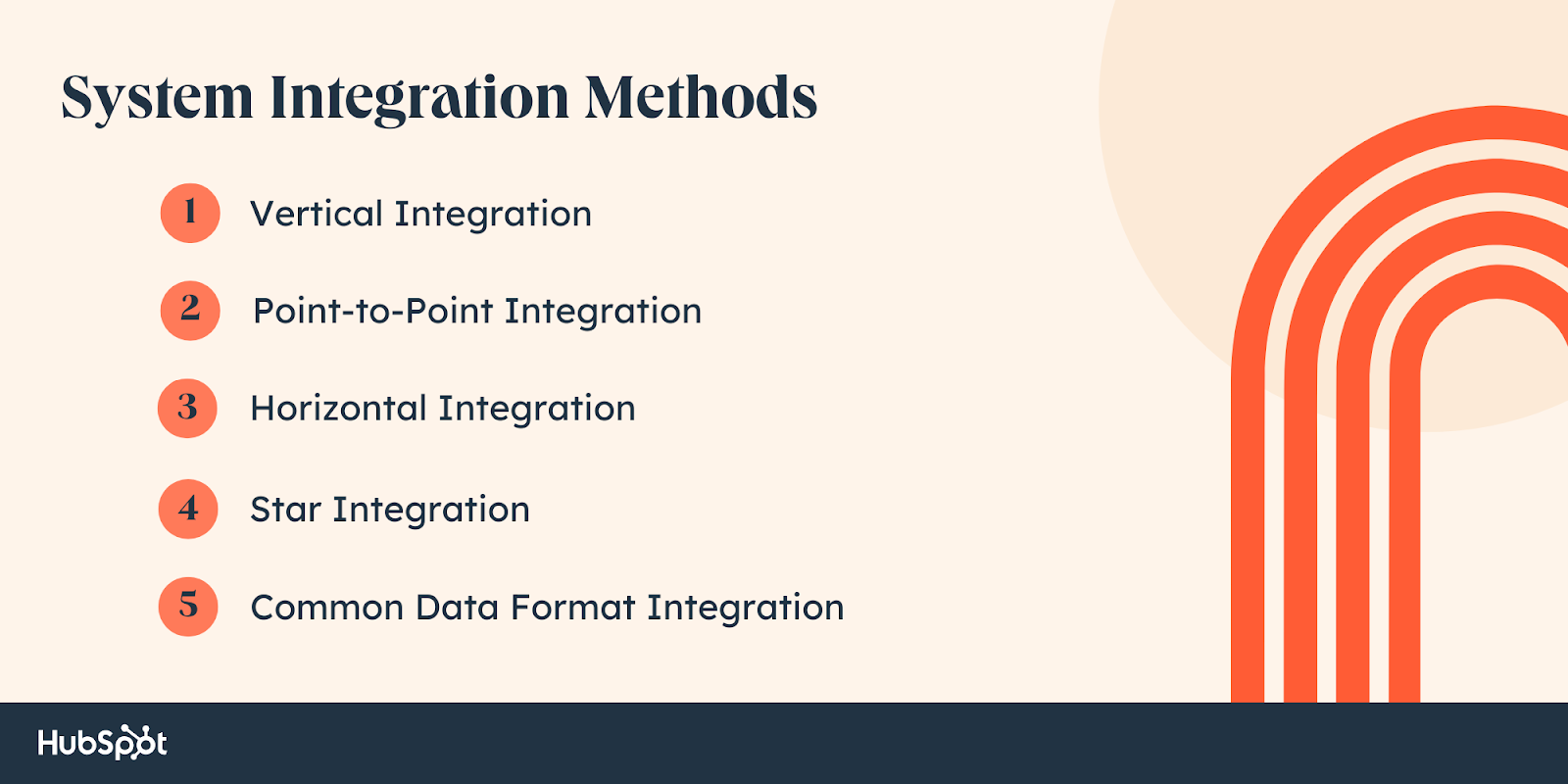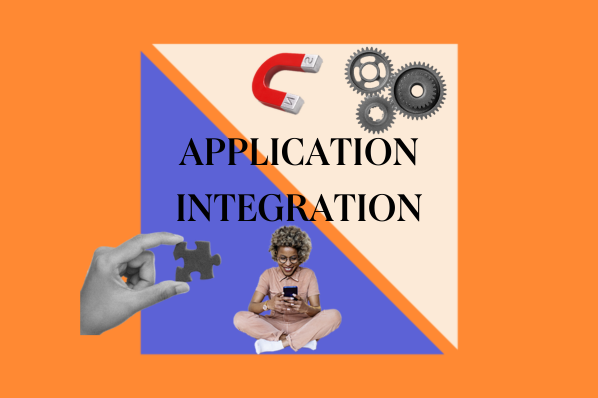Table of Contents
- What is system integration?
- The Benefits of Integrating Systems
- System Integration Methods
- System Integration Challenges
- System Integration Best Practices
The Benefits of Integrating Systems
Systems integration allows for seamless connectivity between software and applications, increasing productivity. Let’s explore some of these benefits below.

Cost Effectiveness
Integrated IT systems can help companies save money on labor costs and other expenses by reducing the need for manual tasks. By automating data transfer between systems, businesses can also avoid the costs associated with errors and delays caused by human intervention.
This increased efficiency can also allow for better allocation of resources and reduce the need for additional staff or resources to manage multiple systems.
Performance Analytics
Integrated IT systems equip business leaders with the necessary data for making informed decisions quickly. Integrating systems provide a more comprehensive and accurate view of data across different systems.
By automating data transfer and eliminating manual data entry, businesses can make more informed decisions based on accurate analytics. This leads to better tracking of key performance indicators (KPIs) and identifying areas for improvement.
Improved Efficiency
Integrated systems can increase productivity while saving time and resources. Because the systems are connected, data can travel easily between them, which minimizes the risk of human error.
Additionally, integrating systems leads to better collaboration between departments and teams, which can streamline workflows. With all systems working together, businesses can achieve a more efficient decision-making process, leading to better overall performance.
Enhanced Security
Consolidating data into a single system through integrated IT systems can improve data security. Access control and auditing capabilities are better with a centralized system. As a result, security risks and data breaches are less likely to occur.
Scalability
You can deploy your integrated system in the cloud. Using the cloud, you can easily scale your system as it grows. All you have to do is set up autoscaling with your cloud provider or order more resources as needed.
System Integration Methods
Now, let’s explore how you can build an integrated system. Below, we’ll explore five different methods, so you can choose which one is best for your business’s needs.

Vertical Integration
Vertical system integration refers to incorporating different software applications within a specific domain or field. Vertical system integration allows businesses to achieve greater agility, efficiency, and effectiveness in their operations.
This process involves building connections between different software applications in a specific workflow. The integration can be achieved through APIs (Application Programming Interfaces) or platforms that allow different applications to interact.
For instance, an ecommerce company might use an integrated system that connects its shopping platform with its shipping and payment processor. This integration would enable the various software applications to share data. Integration also allows the company to easily perform tasks, such as automatically updating inventory levels and tracking shipments.
Best for: This method is best for companies with hardware or physical products that connect to the software. The company can vertically integrate all hardware and software products to control its customers’ experience entirely.
Point-to-Point Integration
Point-to-point integration only involves connecting two system components directly with no middleware. In other words, the two software applications are connected directly to each other using custom code or APIs (Application Programming Interfaces). This method is often used when only one specific application needs to be integrated with another.
For example, a small business might connect its accounting and inventory management software with point-to-point integration.
While point-to-point integration can be a cost-effective way to connect two software applications, it can be difficult to scale as the number of applications to be integrated grows. With each new integration, more custom code or APIs must be created. This can lead to increased complexity and potential security vulnerabilities.
Pro tip: Cloud services such as Azure and AWS offer this type of integration for companies using their cloud products.
Horizontal Integration
Horizontal integration in IT systems refers to integrating software applications or hardware systems that serve similar functions or purposes. This integration improves coordination and collaboration between different departments or teams within a company. Horizontal integration also facilitates better sharing of data and communication.
Best for: This type of integration is best for a situation like a classroom teacher that uses a system to record grades and a system to record attendance. Integrating both systems can give insight into how grades correlate with student attendance.
Star Integration
With star integration, various systems or subsystems are connected to a central system. This method allows data to be shared between the connected systems or subsystems through the hub.
To implement star integration in software, teams typically use an ETL (Extract, Transform, Load) process. The ETL process involves extracting data from various applications and systems, transforming the data into a common format, and then loading it into the central hub.
This allows all the integrated software applications to access the same set of data in a standardized format.
What we like: This method is great for an ecommerce site that sells physical products. The hub would be an application that contains the products. Shipping, the payment processor, and the sales system are all connected to the hub.
Common Data Format Integration
Common Data Format (CDF) integration is a standardized method of integration that enables different systems to use a shared data format. This approach facilitates the easy exchange of data between the systems, regardless of their unique data structures.
Teams can start with identifying the integration requirements and determining what data will be shared between the systems. They then need to develop a CDF that defines the standard format for the data fields needed.
Once the CDF is created, the team can use ETL (Extract, Transform, Load) processes or middleware platforms to map the data to the standard format of the CDF. The team should also ensure that each software application can read the standard format by configuring the settings of the applications.
Best for: Integrating software systems that do not naturally share a common language or format for data.
System Integration Challenges
Although there are many benefits to integrating systems, there are challenges you should take note of before you begin. We’ll explore limitations to consider below.
Inconsistent Landscape
Integrating different systems can be difficult when they use inconsistent operating systems, languages, or data formats. Staying up-to-date with software can take time and might require a considerable amount of resources.
Lack of Expertise
Before you decide to integrate your technology, it’s best to think about who will support and maintain your integrated system. As integrating systems is a complex task, a skilled expert must see the project through. Most companies need help finding talent to handle their system integrations.
No Accountability
Integrating systems involves various subsystems. This means that there are multiple parties involved in the integration process. These stakeholders care if their own system is successfully integrated. If failures occur on a macro level, there may not be anyone willing to take ownership of the whole project.
System Integration Best Practices
In order to have a successful system integration, keep these best practices in mind.

Create an integration strategy.
Create a plan that outlines the steps necessary to achieve the desired integration process goals and requirements. Make sure to consider the tools and resources needed, the timeline for each step, and any potential risks.
Gather consistent documentation.
To promote easy maintenance and troubleshooting, you’ll need to document the integration process thoroughly. This includes reporting any system or data modifications that were made.
Consistent documentation enables both technical and non-technical stakeholders to understand the process flow and functionality of the integrated systems. It also provides documentation of the data structures and data exchange protocols, which is helpful in ensuring that the integration is working as expected.
By creating detailed documentation, the stakeholders can easily track how different software systems interact with each other and the potential challenges the integration might pose.
Use uniform data formats.
Uniform data formats ensure that the different software systems can exchange data seamlessly. When integrating different software systems, any discrepancies in the data formats can lead to processing errors, data corruption, and inconsistency.
By establishing uniform data, integrated software systems can read, process, and interpret the data without error. This leads to better data quality, more efficient data management, and a reduction in data entry errors.
Test thoroughly.
Before you get to the deployment stage, make sure your team has run several tests during the process. This will allow your team to catch any errors preventing the systems from being integrated.
Pursuing System Integration
As businesses depend on larger tech stacks, the demand for integration will increase. System integration helps organizations improve their understanding of operations and optimize performance. Organizations can outpace competitors by creating a streamlined system — internally and for customers.
Integrations












